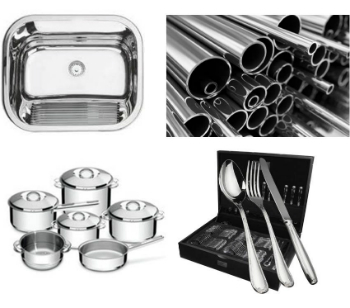Stainless or stainless steel is a metal alloy composed of iron, chromium, carbon and nickel that is very resistant to corrosion and heat.
Depending on the type of application, other elements that modify and improve its basic characteristics, such as silicon, titanium, niobium, molybdenum, cobalt, boron and nitrogen, may also be part of its composition.
While common steels undergo the rusting process, stainless steel is generally very resistant to corrosion.
Chromium is responsible for this resistance, which, depending on the amount in its composition, when it comes in contact with oxygen, forms a protective film on the steel surface, which makes it impermeable. Stainless steel must have a minimum of 10.50% chromium.
The addition of nickel to stainless steel, gives it ductility, that is, it allows it to be worked on its surface, in addition to resistance to high temperatures and weldability, improving its general resistance.
applications
There are several types of stainless steel, each for a specific use. It is found in different equipment and has several uses:

- Hospital facilities;
- Cutlery segments (cutlery, pans, tableware);
- Sanitary equipment, sinks and furniture;
- Elevator linings;
- Stair railings;
- Appliances (stove, refrigerator, microwave);
- Automobile parts;
- Nautical equipment;
- Construction.
properties
The main difference between common steel and stainless steel is that the latter does not suffer corrosion. This means that in contact with oxygen, the material will not undergo oxidation , that is, it will not rust. The tendency to oxidation is a characteristic of metals.
The use of stainless steel in the manufacture of various products is determined by its qualities for various purposes, including:
- Corrosion resistant;
- Ease of cleaning;
- Hygienic and shiny appearance;
- Hygienic material;
- Low maintenance cost;
- Resistance to temperature variation;
- High temperature resistance;
- Recyclable material.
